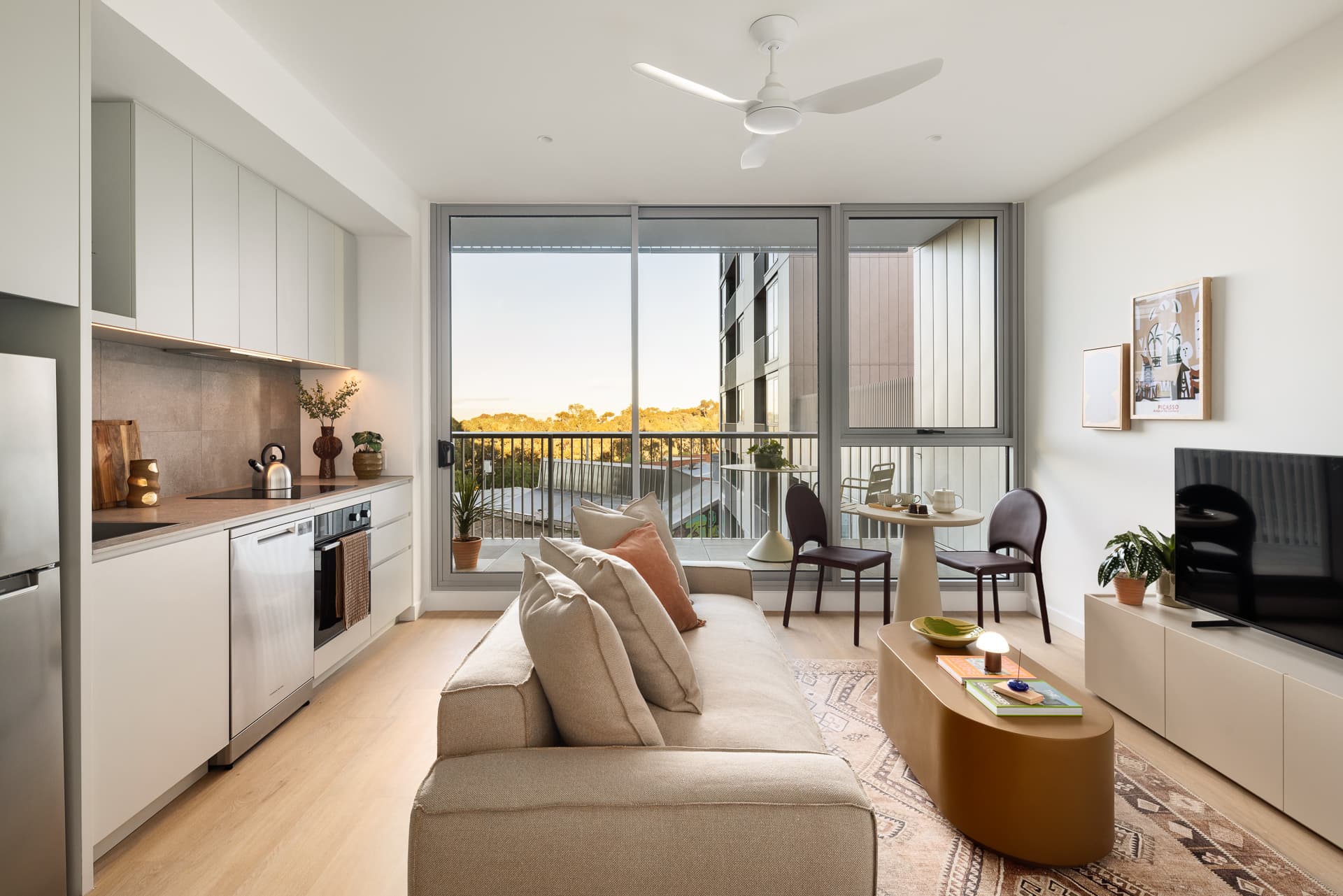Bright Lights and a Bright Outlook
Mirvac Head of Research Alexandra Gray finds plenty of cause for optimism as the nation enters its recovery period with our cities primed for growth.
Putting aside the pandemic and the interruption, stress and hardship many have gone through, the past two years have covered extraordinary periods of extreme economic contraction and stunning recovery. Perhaps the housing market exemplifies this trajectory best.
While 2021 ends the year with signs of ‘cooling’ in the housing market, we think it is best to look through fluctuations and judge how the underlying growth path will play out.
Housing markets have no shortage of colourful opinions about where to next. For example, sharply reduced overseas migration was said to lead to a prolonged weakness with an imbalanced supply/demand backdrop.
However, the economy weathered the storm with large policy support from government payments and subsidies, and a reduction in official interest rates to near zero.
While some of those supports have ended or tapered, low rates are likely to be a feature for some time, notwithstanding they will almost certainly be higher than what was available in 2021. Already by year end, fixed mortgage rates under 2% have largely gone. The need for emergency support measures, that were a feature of 2020-21 are no longer required against a backdrop that is improving.
Consider the following:
-
The Australian National Accounts reported that while the national economy contracted in the September quarter by 1.9%, a period which saw 11 million Australians in lockdown, the household savings rate lifted strongly from 11.85% to an extraordinary 19.8%.
-
Households in Australia have built a formidable financial buffer and as long as we do not return to extensive lockdowns, we can expect household spending will drive strong economic growth over the course of 2022 and likely into 2023. Risks of new variants are likely to see Australians remain relatively cautious about forward overseas travel plans, resulting in reduced leakage of spending offshore and more firepower spent in Australia as households draw down their savings war-chest over the next one to two years.
-
Household spending will be supported by income growth too. The Reserve Bank of Australia expects wage income to keep rising through next year. Together with rising job ads and strong demand for workers in most sectors, higher aggregate labour income will be a strong support for housing markets.
And remember that demand-side drivers like population growth are likely to be recovering next year and potentially back to big pre-Covid levels from 2023. The Federal Government’s Centre for Population expects Australia to return to high migration levels, for a developed economy. Further they expect the four largest cities to be home to three in four new Australians by FY24. And one in two new residents to Australia is expected to call Sydney and Melbourne home by this time.
This will have significant impact on our cities, and inner urban areas dominated by apartments. Looking at migration patterns of migrants over the five years to FY20 shows that 75% of new overseas migrants to NSW reside within 30km of the Sydney CBD. For new overseas migrants to Victoria, this is even higher at 80% residing within 30km of Melbourne CBD.
Migrants cluster in Australia’s two largest cities and are relatively sticky, providing strong support to urban housing markets over time. Over 85% of foreign-born migrants who arrived in Australia after 1991 live in large capital cities. In fact, at the last Census, two in every five residents of both Sydney and Melbourne were foreign-born. Over a third of all households speak a language other than English at home.
Within cities, ethnic groups cluster with those that share their distinctive culture or way of life. People often seek similar nationalities or customs amongst neighbours and a desire to live in proximity to religious or cultural affiliations which often extends to their children’s schooling.
Perhaps it’s best evident in the urban retail and open spaces where treasured local cuisine, service providers and meeting places provide the connection to home countries, values and ancestry.
These are strong pulling factors for urban life that often result in preferencing proximity to families and community, creating a sticky geographical ring-fence.
When choosing to buy a residence, it’s important to take a longer term view. At Mirvac, we are strong believers in urban cities and quality residential. Over the next decade, Australia’s largest capital cities are forecast by the Federal Government to remain young with ageing more pronounced in regional Australia. Peak age cohorts for large cities in 2031 are expected to be in the range of 20 to 49 years old which will require a diversity of housing, employment, services and social infrastructure. Throughout the rest of Australia, peak age cohorts are expected to be between 60 and 75 years old.
Like many European countries, Australia’s major cities have multiple functional layers that don’t exist in the same number elsewhere. For example, the hubs of commerce, culture and public administration are concentrated in just a few major cities. And it is our biggest cities that have concentrations of deep knowledge sectors and skills that will continue to be best equipped for a digital and global future.
 Alexandra Gray, Mirvac Head of Research
Alexandra Gray, Mirvac Head of Research

Mirvac acknowledges Aboriginal and Torres Strait Islander peoples as the Traditional Owners of the lands and waters of Australia, and we offer our respect to their Elders past and present.
Artwork: ‘Reimagining Country’, created by Riki Salam (Mualgal, Kaurareg, Kuku Yalanji) of We are 27 Creative.

